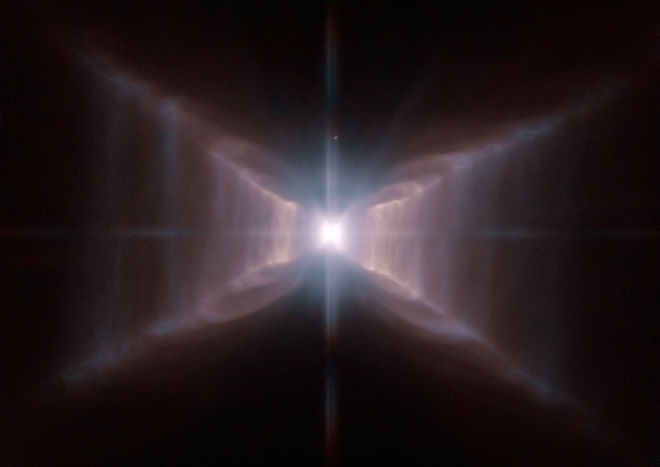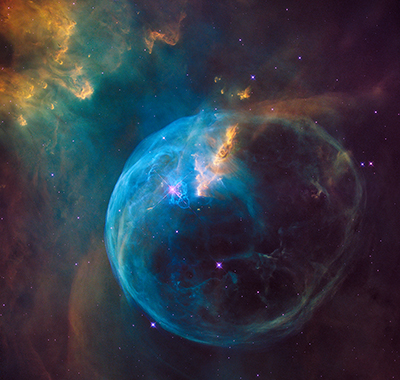the Red Rectangle Nebula

A striking new image captured by the Hubble Space Telescope
delivers a deep look into a mysterious cosmic object
called the Red Rectangle Nebula.

The Red Rectangle, so named because of its bizarre shape and striking color, is a nebula —
a cosmic cloud of gas and particles. In this case, the nebula is formed by the central star, HD 44179,
which is reaching the end of its life and shedding most of its mass into space.

Behemoth Black Hole Found in an Unlikely Place
APRIL 6, 2016: Imagine driving through a small town containing modest-sized buildings and seeing a 100-story skyscraper. Astronomers found the equivalent monstrosity in space: a near-record supermassive black hole that weighs 17 billion suns and lives in a cosmic backwater community of a few galaxies. Until now, extremely massive black holes have been found at the cores of very large galaxies in regions of the universe packed with other large galaxies. This is not just coincidence. Like a cosmic Pac-Man, a monster black hole gobbles smaller black holes when two galaxies collide. This game of bumper cars is common in large galaxy clusters. In fact, the current black hole record holder tips the scale at 21 billion suns and resides in the crowded Coma galaxy cluster, located 330 million light-years away.
The newly discovered supersized black hole resides in the center of a massive elliptical galaxy, NGC 1600, located in a small grouping of about 20 galaxies. Astronomers estimate that these smaller galactic groupings are about 50 times more abundant than spectacular galaxy clusters like the Coma cluster. Based on this discovery, astronomers are now asking, Is this the tip of an iceberg? Maybe there are more monster black holes out there that don't live in a skyscraper in Manhattan, but in a tall building somewhere in the Midwestern plains.

APRIL 21, 2016: the telescope has photographed an enormous, balloon-like bubble being blown into space by a super-hot, massive star. Astronomers trained the iconic telescope on this colorful feature, called the Bubble Nebula, or NGC 7635. The bubble is 7 light-years across — about one-and-a-half times the distance from our sun to its nearest stellar neighbor, Alpha Centauri. The Bubble Nebula lies 7,100 light-years from Earth in the constellation Cassiopeia.
we really dont know
very much do we?
all our ideas about
facts and evidence
about the thing we call LIFE
are certainly just tiny candles in the
vast dark universe
that we call home